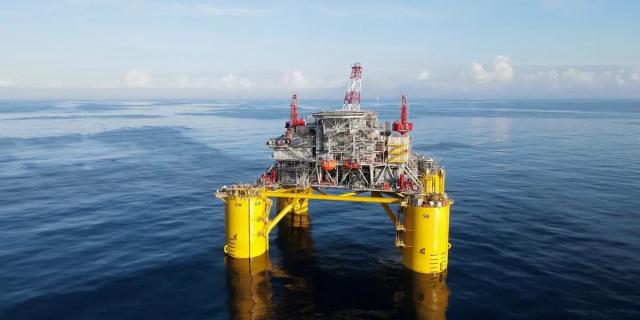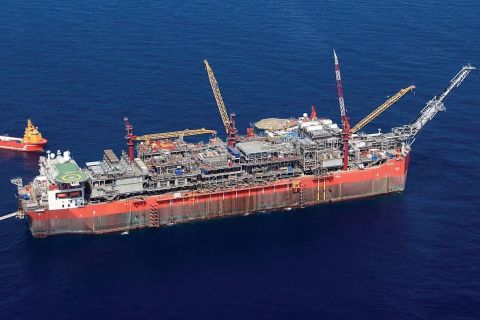
The Vito platform in the US Gulf of Mexico is officially onstream. (Source: Equinor)
Production at the Vito floating production facility is officially underway, Shell announced in a press release on February 16.
“Projects like Vito enable us to generate greater value from the GoM, where our production has amongst the lowest greenhouse gas intensity in the world for producing oil,” Shell’s upstream director Zoe Yujnovich said in a press release.
The Vito field spans four Outer Continental Shelf blocks in the Mississippi Canyon. It is located 150 miles southeast of New Orleans at a water depth of more than 4,000 ft. It is also 10 miles away from Shell’s Mars TLP, which it will produce into.
Vito is a four-column semi-submersible host facility with eight subsea wells at a depth of 31,000 ft. It also includes deep in-well, gas lift and associated subsea flowlines and equipment at a depth of 18,000 ft. It is Shell’s first deepwater platform in the Gulf to use a cost-efficient host design. Despite this, Vito’s peak production is still estimated to be 100,000 boe/d with an estimated recoverable resource volume of 290 MMboe.
Originally discovered in 2009, the field is owned by both Shell and Equinor, with Shell being the operator at 63.11% and Equinor having 36.89%. In 2015, the original design was rescoped and changed, resulting in an 80% reduction in carbon emissions over the lifetime of the facility. The simplification also brought about a cost reduction of more than 70% from the original concept. Shell announced final investment decision on the project in April 2018.
“The US Gulf of Mexico delivers some of Equinor’s highest-value barrels, helping us meet society’s critical energy needs while maintaining our focus on reducing emissions,” said Chris Golden, Equinor’s U.S. country manager.
Recommended Reading
TotalEnergies Starts Production at Akpo West Offshore Nigeria
2024-02-07 - Subsea tieback expected to add 14,000 bbl/d of condensate by mid-year, and up to 4 MMcm/d of gas by 2028.
Well Logging Could Get a Makeover
2024-02-27 - Aramco’s KASHF robot, expected to deploy in 2025, will be able to operate in both vertical and horizontal segments of wellbores.
Shell Brings Deepwater Rydberg Subsea Tieback Onstream
2024-02-23 - The two-well Gulf of Mexico development will send 16,000 boe/d at peak rates to the Appomattox production semisubmersible.
E&P Highlights: Feb. 26, 2024
2024-02-26 - Here’s a roundup of the latest E&P headlines, including interest in some projects changing hands and new contract awards.
Remotely Controlled Well Completion Carried Out at SNEPCo’s Bonga Field
2024-02-27 - Optime Subsea, which supplied the operation’s remotely operated controls system, says its technology reduces equipment from transportation lists and reduces operation time.





